Opel Corsa B 1993–2000 Service and Repair Manual: Varajet II carburettor - overhaul
Automatic choke type
1. It is rare for the carburettor to require complete dismantling; indeed, normally where this is required then it would probably be more economical to renew the complete unit.
2. It will usually be found that the first few operations described in the following paragraphs to remove the cover will be sufficient to enable cleaning of the jets and carburettor float chamber to be carried out.
3. With the carburettor removed and external dirt cleaned away, pull off the vacuum hose from the choke vacuum unit (see illustration).
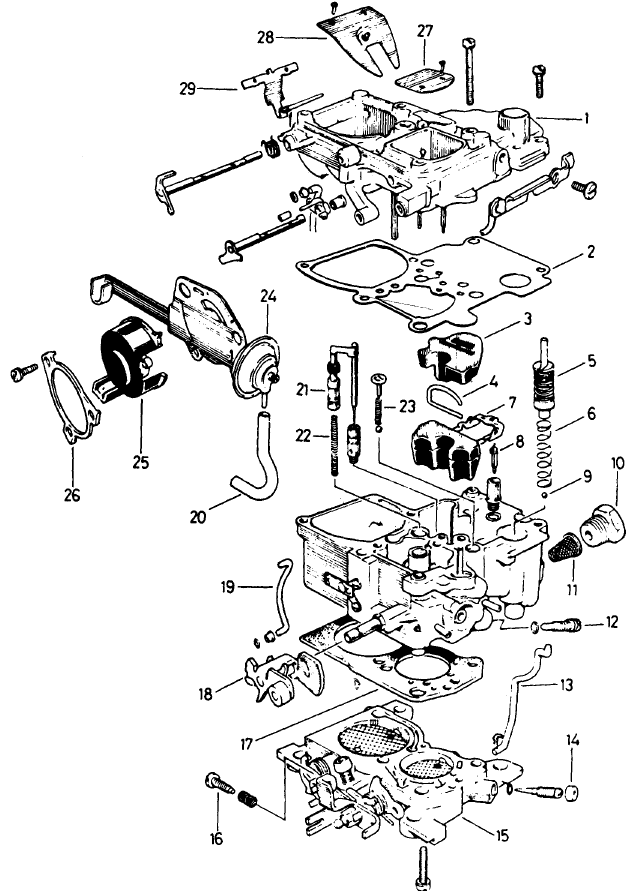
Exploded view of Varajet ll
carburettor
- Cover
- Gasket
- Packing piece
- Float pin
- Accelerator pump piston
- Spring
- Float
- Fuel inlet needle valve
- Check ball (accelerator pump)
- Fuel inlet union
- Fuel filter
- Idle speed adjustment screw
- Link rod
- Idle mixture adjustment screw
- Throttle valve block
- Fast idle screw and spring
- Gasket
- Fast idle cam
- Fast idle link rod
- Vacuum hose
- Part load needle valve and piston
- Spring
- Suction valve and check ball
- Choke vacuum unit
- Choke housing cover
- Cover retainer
- Choke valve plate (primary barrel)
- Baffle flap (secondary barrel)
- Full load needle valve
4. Extract the three screws from the automatic choke retaining ring and withdraw the assembly.
5. Extract the split pin and disconnect the accelerator pump rod from the lever.
6. Unscrew the fuel inlet nozzle and extract the gauze filter from inside (see illustration).
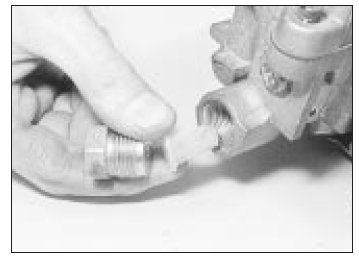
Fuel inlet union and gauze
7. Extract the retaining clip and disconnect the choke connecting rod from the cam.
8. Extract the three short and four long carburettor cover retaining screws (see illustration).
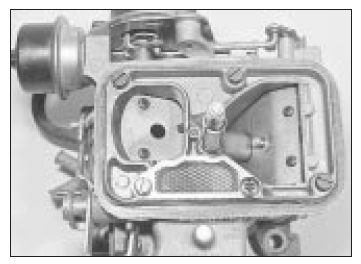
Varajet II carburettor top cover
9. Remove the cover making sure that, as it is withdrawn, the gasket remains behind on the flange of the float chamber. Remember that the accelerator pump plunger is under spring tension.
10. Remove the accelerator pump plunger and spring and carefully peel off the cover gasket. Remove the pump suction valve spring retainer (see illustration).
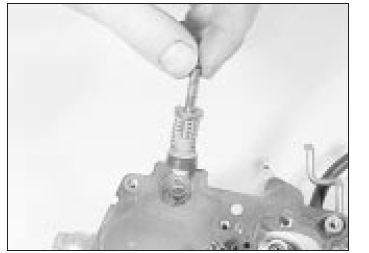
Accelerator pump plunger and
spring
11. Pull or twist out the vacuum piston spring and needle of the carburettor first stage. Take care not to bend the retaining bracket or partial load needle.
12. If necessary, the partial load plunger may be withdrawn by gripping its rod with a pair of pliers.
13. Remove the packing piece, float and needle from the float chamber (see illustration). Empty the fuel from the chamber.
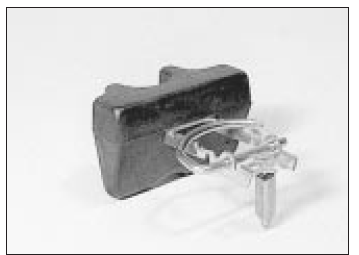
Float and needle valve
14. Note their location and unscrew the jets.
15. Extract the four retaining screws and remove the throttle valve plate block.
16. Further dismantling is not recommended.
17. Clean all components and renew any that are worn or damaged. If the throttle valve plate spindle is worn then the complete throttle block must be renewed. Clean jets and passages with air pressure only; never probe with wire or their calibration will be ruined.
18. Obtain a repair kit which will contain all the necessary renewable items, including gaskets.
19. Reassembly is a reversal of dismantling, but observe the following points.
20. When assembling the accelerator pump, ensure that the check ball is correctly located.
21. Check that the needle valve spring is correctly located on the float arm bracket.
There should be approximately 0.2 mm free play between the spring and the bracket.
Correct if necessary by carefully bending one item or the other.
22. Refit the float, needle valve and pivot clips. Check the float level, with the gasket fitted, by applying moderate finger pressure to the float arms and pivot clip to close the needle valve (see illustration). The top surface of the float should be the specified distance below the carburettor top flange.
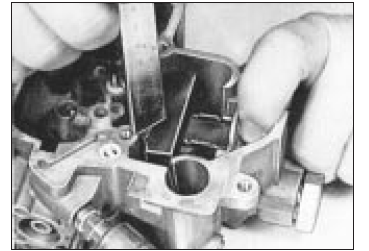
Measuring the float level
23. Correct the float level if necessary by carefully bending the float arms at the points shown (see illustration).
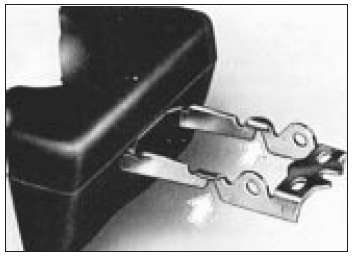
Float adjustment points (arrowed)
24. When installing the cover to the carburettor body, take care that the accelerator pump plunger does not become wedged.
25. Make sure that the breather screen is in position.
26. Check that the bi-metallic spring of the automatic choke engages positively with the choke valve plate spindle arm.
27. Check the operation of the throttle valve plate lever. Remember that the secondary valve plate does not open until the primary valve plate has opened by two-thirds of its travel. The secondary throttle valve plate will not open until the choke valve plate is fully open after the engine has reached operating temperature.
28. Carry out those checks and adjustments which can be performed with the carburettor on the bench.
29. After refitting, set the idle speed and mixture, then carry out any adjustments outstanding.
Manual choke type
30. The operations are very similar to those described in the preceding paragraphs, but the references to automatic choke components should be ignored.
 2E3 carburettor - overhaul
2E3 carburettor - overhaul
Note: Refer to the note at the beginning.
1. With the carburettor removed from the
vehicle, drain the fuel from the float chamber
and vapour separator. Clean the outside of
the carburettor.
2. Re ...
 Inlet manifold - removal and
refitting
Inlet manifold - removal and
refitting
Removal
1.2 litre models
1. The manifold may be removed with or
without the carburettor. In either case and follow the steps preparing for
carburettor removal.
2. Disconnect the brake servo vacuu ...
See also:
Opel Corsa B 1993–2000 Service and Repair Manual. Inlet manifold - removal and
refitting
Removal
1.2 litre models
1. The manifold may be removed with or
without the carburettor. In either case and follow the steps preparing for
carburettor removal.
2. Disconnect the brake servo vacuu ...
